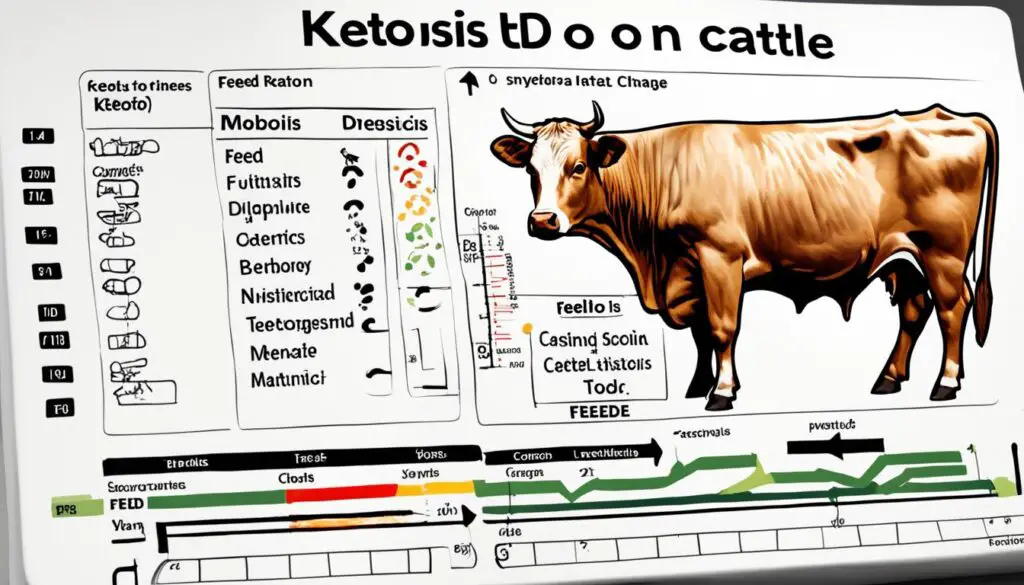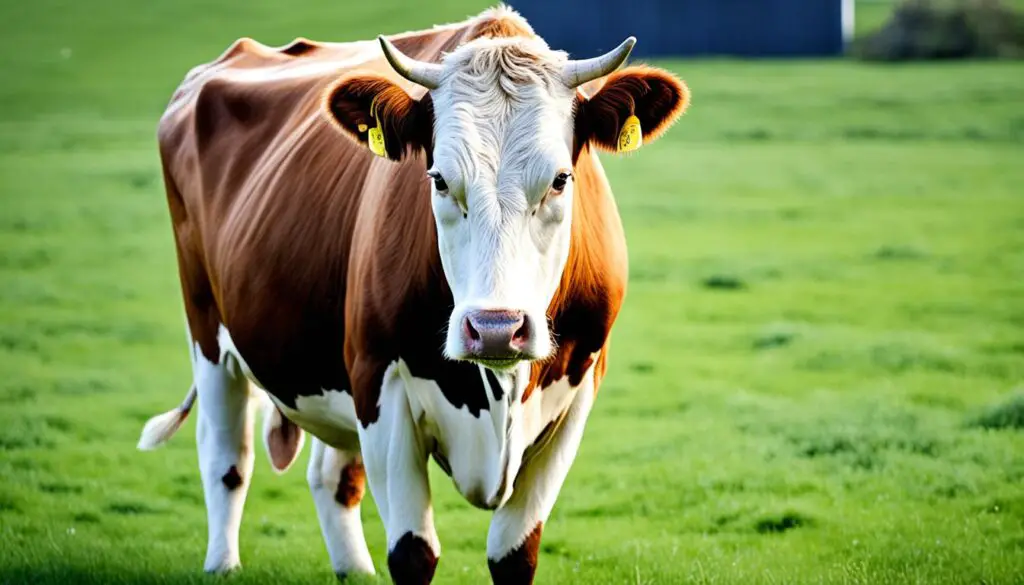Knowledgeable Tips about Managing Ketosis in Cattle
On the planet of dairy and beef cattle administration, a staggering 40% of early-lactation dairy cows are affected by some extent of ketosis—a metabolic dysfunction which will have crucial repercussions on cattle nicely being and farm economics.
Navigating by the complexities of this example requires a focused technique to ketosis administration, balancing diets, and monitoring vitality ranges to deal with the well-being and productiveness of the herd. As weighty as these statistics are, the operational impacts may very well be mitigated with strategic, educated measures designed to prioritize and shield cattle nicely being.
Delving into the administration of ketosis in cattle requires not merely diligence however moreover a mixture of info and pragmatic movement.This informative info provides you with expert insights vital to understanding, diagnosing, and addressing ketosis in dairy and beef cattle, grounded throughout the latest evaluation and field-tested practices.
On this weblog submit info, we’re going to discuss and uncover one of the simplest ways to defend your herd and what you’re selling with environment friendly strategies that resonate with the nicely being needs of these valuable animals.
Understanding Ketosis in Cattle
Delving into the metabolic complexities of dairy and beef cattle reveals the pivotal perform of vitality steadiness in animal nicely being. The prevalence of ketosis in cows is a multifaceted course of, deeply rooted throughout the natural mechanisms of vitality deficit and fat metabolism. It opens a window into understanding how weight reduction plan, digestion, and physiology intertwine to deal with, or in some circumstances, disrupt bovine nicely being.

What Is Ketosis?
At its coronary coronary heart, ketosis represents a metabolic state the place damaging vitality steadiness prompts the physique to hunt totally different vitality sources. The liver turns right into a biochemical foundry, orchestrating ketone manufacturing from fatty acids. These ketones, meant to be secondary gasoline, can accumulate to harmful ranges affecting a cow’s productiveness and nicely being.
How Does Ketosis Occur in Dairy and Beef Cattle?
The freeway to ketosis in cattle is paved by an vitality expenditure that outweighs consumption. Throughout instances of extreme demand, equal to early lactation, cattle sometimes fail to consumption satisfactory vitality, triggering a cascade of physiological responses.
This vitality scarcity forces the mobilization of fat retailers, releasing not solely energy-rich molecules however moreover crafting the stage for ketone our our bodies to type when further Acetyl-CoA amasses. This example, characterised by a signature drop in milk yield, diminished urge for meals, and weight discount, is the telltale sign of an animal struggling to mainline its vitality stream successfully.
| Vitality State | Physiological Response | Consequence |
|---|---|---|
| Adversarial Vitality Stability | Fat Mobilization | Elevated Free Fatty Acids |
| Restricted Oxidation | Acetyl-CoA Buildup | Ketone Manufacturing |
| Ketosis Manifestation | Indicators Appear | Diminished Milk Yield & Nicely being Decline |
The science behind ketosis in cattle is an intricate dance of natural processes. To mitigate risks and foster cattle welfare, understanding these vitality dynamics is instrumental. With information as our info, we’ll navigate the challenges of ketosis in cows, making sure their productiveness and vitality are sustained.
Risk Parts for Ketosis in Cows
Determining hazard components for ketosis in cows is instrumental for utilizing the appropriate preventive measures for ketosis. A large number of determinants contribute to this metabolic dysfunction, the place recognising and mitigating risks can forestall the escalation of indicators and help whole cattle wellbeing.
Adversarial Vitality Stability and Its Implications
Vitality steadiness is an important aspect for cattle nicely being, notably referring to lactating or extreme parity cows. A damaging vitality steadiness can result in a state of hypoglycemia, instigating metabolic upheaval which will lead to ketosis.
This imbalance sometimes occurs in the middle of the transition interval post-calving, when the cow’s vitality output surpasses her dietary consumption, necessitating fat mobilization which predisposes her to ketosis.
Environmental and Dietary Contributors to Ketosis
Farm administration practices, notably weight reduction plan composition and environmental circumstances, are determining components for ketosis. Inadequate feed prime quality and poor forage would possibly predispose cattle to dietary deficits, whereas colder climates would possibly escalate vitality requires, extra aggravating the hazard of a dangerous vitality steadiness.
- Poor Forage Prime quality: Forages with low dietary price may end up in insufficient dietary vitality and compromised animal nicely being.
- Extreme Parity Cows: Older cows, which normally have the subsequent parity, are further inclined to ketosis on account of their intensive metabolic requires for milk manufacturing.
Interventions geared towards addressing weight reduction plan prime quality and making sure ample vitality consumption are vital for the well-being of these animals. The dietary standing of lactating cows must be fastidiously handled to forestall lowered productiveness and elevated sickness incidence.
| Risk Difficulty | Description | Preventive Measure |
|---|---|---|
| Adversarial Vitality Stability | Occurs when vitality demand all through lactation exceeds consumption. | Monitor weight reduction plan to increase energy-rich feed components. |
| Poor Forage Prime quality | Low-nutrient forage leading to inadequate vitality present. | Check out forage and complement weight reduction plan to optimize dietary consumption. |
| Extreme Parity Cows | Older cows with greater lactation requires rising the hazard of ketosis. | Current targeted dietary administration for older lactating cows. |

A strategic technique to sustaining optimum cow nicely being entails analyzing these hazard components and implementing individualized dietary functions that cater to vitality requires, considerably in extreme parity cows and in durations of poor forage prime quality. Avoiding high-risk feeds like silage with elevated butyric acid content material materials and making sure a balanced weight reduction plan can significantly reduce the incidence of ketosis.
Recognizing Ketosis Indicators in Cattle
Being able to ascertain the onset of ketosis in cattle is crucial for farmers and veterinarians alike. A sturdy information of ketosis indicators not solely might also assist in early evaluation however moreover in implementing nicely timed therapies to mitigate the hostile outcomes on cattle nicely being and farm economics.
Recognizing these indicators entails understanding the excellence between medical and subclinical presentation and being aware of the various bodily and behavioral indicators associated to this metabolic dysfunction.
Scientific versus Subclinical Ketosis
Inside the sphere of dairy farming, discerning the nuances between medical and subclinical ketosis is significant. Whereas medical ketosis is marked by seen and measurable indicators, subclinical ketosis poses a covert menace, sometimes going undetected with out impairing the plain nicely being of the animal.
However, its have an effect on on manufacturing and replica may very well be vital, making consciousness and monitoring an integral part of livestock administration.
Bodily and Behavioral Indicators
Within the case of determining ketosis indicators in cattle, there are some clear bodily and behavioral changes which will perform purple flags. These indicators range from a notable lowered milk yield, a telltale sign of vitality insufficiency, to the acetone breath emanating from the cattle, indicative of maximum ketone manufacturing. Furthermore, caregivers ought to look at for aggressive conduct which could signal discomfort because of underlying metabolic stress.
- Diminished Milk Yield: Considered one of many earliest and most measurable indicators of ketosis is a drop in milk manufacturing.
- Acetone Breath: A particular sweet and fruity scent from the breath or urine of cattle is a attribute signal of ketosis.
- Aggressive Habits: Changes in temperament, equal to elevated irritability or aggressiveness, may very well be an expression of the bodily discomfort attributable to ketosis.
Understanding and promptly responding to these alerts is essential for sustaining the wellbeing of dairy herds and making sure the monetary viability of dairy operations.
Diagnosing Ketosis in Dairy and Beef Cattle

Determining the presence of ketosis in cattle is significant for implementing nicely timed therapies and making sure the wellbeing of the herd. In every dairy and beef cattle, a reliable evaluation hinges on measuring the main target of ketones in bodily fluids. This course of entails various commonplace methods:
- Blood Ketone Ranges: This system is taken under consideration a gold commonplace for diagnosing ketosis. Blood samples are taken and analyzed for beta-hydroxybutyrate (BHB), the predominant ketone physique all through ketosis.
- Urine Ketone Detection: Whereas a lot much less specific than blood testing, urine checks can level out ketone excretion and performance a quick topic check out for ketosis.
- Milk Ketone Checks: Particularly designed milk ketone strips can current a semi-quantitative analysis of ketosis in lactating cows, combining consolation with low-cost accuracy.
Selecting in all probability probably the most applicable methodology would possibly rely upon obtainable property and the prevalence of ketosis inside a given herd. Subclinical ketosis, a a lot much less overt sort of the state of affairs with out seen indicators, generally requires nearer surveillance by blood or milk ketone testing to forestall improvement to medical ketosis. Farms would possibly make use of a mix of these diagnostic methods to maximise early detection, as outlined beneath:
| Diagnostic Method | Advantages | Limitations | Most interesting for |
|---|---|---|---|
| Blood Testing | Extraordinarily specific and quantitative | Requires blood draw and laboratory analysis | Confirming evaluation and measuring severity |
| Urine Testing | On-site speedy screening | A lot much less specific, affected by dehydration | Topic evaluation in symptomatic animals |
| Milk Testing | Useful for lactating cows, may very well be batch-tested | Semi-quantitative, would possibly miss early circumstances | Routine surveillance in dairy herds |
The purpose of diagnosing ketosis should not be solely to cope with affected animals however moreover to tailor administration practices to forestall onset throughout the herd. A clear understanding of ketosis evaluation in dairy and beef cattle, alongside insights into blood ketone ranges, urine, and milk excretion of ketones, is a cornerstone of worthwhile cattle nicely being administration.

Managing Ketosis in Dairy and Beef Cattle
Effectively managing ketotic cows entails a multi-pronged technique that mixes quick medical interventions with strategic dietary adjustments.
Remedy is geared towards swiftly restoring the vitality steadiness, and assuaging the medical indicators of ketosis, to return cattle to their optimum manufacturing ranges. Let’s delve into the environment friendly therapies and interventions obtainable for ketosis in cattle.
Ketosis Remedy Decisions
The preliminary step in ketosis treatment is to cope with the quick glucose deficiency that is central to the state of affairs. This generally entails the administration of glucose dietary dietary supplements which give a quick provide of vitality for cattle in need. Glucose may very well be delivered orally or intravenously counting on the severity of the cow’s state of affairs and the urgency of the state of affairs.
Pharmaceutical and Dietary Interventions
For longer-term administration, pharmaceutical decisions equal to corticosteroids are generally employed. These help to stimulate glucose manufacturing and reduce the ketone physique formation throughout the liver.
Dietary help performs an vital perform as properly, and it entails integrating glucogenic substances that encourage pure glucose synthesis. Consequently, a blended treatment routine is significant for every quick and sustainable ketosis administration.
| Remedy Method | Description | Benefits |
|---|---|---|
| Glucose Dietary dietary supplements | Direct glucose supplementation to applicable hypoglycemia | Provides quick assist from vitality deficit |
| Corticosteroids | Pharmaceutical brokers that promote gluconeogenesis | Helps longer-term administration of glucose ranges |
| Dietary Approaches | Inclusion of glucogenic precursors throughout the weight reduction plan | Enhances vitality steadiness and helps whole nicely being |
Understanding and implementing these treatment protocols are vital for farm managers and veterinarians alike in efficiently managing ketotic cows. It’s a fragile course of that balances expedient medical care with conscientious dietary planning.
Feeding Strategies for Ketosis Prevention
To maintain up the nicely being and productiveness of dairy cattle, notably in the middle of the transitional interval, it is important to implement educated feeding strategies for ketosis prevention. These strategies embody a variety of approaches geared towards optimizing nutrient consumption and adjusting diets to reduce the hazard of ketosis.
Take care of full transitional cow administration and integrating high-fiber diets not solely aids in defending at-risk cattle in peak state of affairs however moreover fortifies the cattle’s safety in opposition to potential metabolic points.
Optimizing Vitality Consumption Publish-Calving
Immediately after calving, cows experience a significant rise in vitality requirements to keep up the requires of lactation. It’s vital to produce an energy-dense weight reduction plan to forestall damaging vitality steadiness all through this time.
As part of environment friendly transitional cow administration, dairies must reassess and presumably enhance the vitality content material materials of post-calving rations to help the sudden enhance in vitality output.
Adjusting Dietary Components for At-Risk Cattle
Adjusting the dietary components to forestall ketosis is a precision course of that takes into consideration the actual needs of high-risk cattle. Key nutritional vitamins like fermentable carbohydrates and positive fat sources may very well be important in managing vitality ranges. The introduction of high-fiber diets helps maintain rumen nicely being and efficiency, stopping metabolic disruptions that might lead to fat mobilization and subsequent ketone manufacturing.
The following desk outlines the vital dietary adjustments and dietary dietary supplements for at-risk cattle to forestall ketosis:
| Nutrient/Complement | Benefits | Recommendation |
|---|---|---|
| Extreme-Fiber Forages | Improves rumination and saliva manufacturing, stabilizing rumen pH | 60% of dry matter consumption |
| Fermentable Carbohydrates | Boosts vitality ranges, helps propionate manufacturing | Stability to meet nevertheless not exceed vitality requirements |
| Niacin | Performs a job in vitality metabolism, would possibly reduce fat mobilization | 6-12 grams per head per day |
| Propylene Glycol | Provides a direct provide of glucose precursor | 300-400 ml per head per day in the middle of the primary week post-calving |
To deal with the complexities of a worthwhile feeding program, it’s helpful to work rigorously with a nutritionist who can tailor the burden loss plan to the herd’s specific needs whereas sustaining a tally of whole metabolic nicely being. Utilizing these strategies lastly contributes to the well-being of the cattle and the monetary effectivity of the dairy operation.
Addressing the Impression of Physique Scenario Ranking (BCS)
Sustaining an optimum Physique Scenario Ranking (BCS) is paramount in stopping the onset of ketosis in dairy cattle. Attaining a steadiness throughout the BCS for cows may very well be troublesome, notably when considering the various physiological requires all via their lactation and dry durations.
The implications of BCS on whole cow nicely being and subsequent lactation effectivity are vital, as is the current enterprise focus on dry interval administration and improved dietary strategies.
Monitoring and Managing BCS for Ketosis Administration
Fixed monitoring of BCS offers a proactive technique to ketosis administration. This method ought to start out properly sooner than the transition into lactation, with particular consideration given in the middle of the dry interval. Adjusting feed rations to deal with a BCS contained in the optimum range can have a profound influence on minimizing the vitality deficiencies that contribute to ketosis.
A BCS that is too extreme (over-conditioned cows) or too low can every be indicators of potential nicely being issues:
- Over-conditioned cows are on the subsequent hazard of rising metabolic points equal to ketosis.
- Beneath-conditioned cows would possibly lack the necessary vitality reserves to meet the requires of early lactation, leading to an elevated chance of damaging vitality steadiness.
Thus, the cautious and customary evaluation of BCS is an indispensable component of holistic herd nicely being administration.
Outcomes of Over-Conditioning on Ketosis Risk
Over-conditioned cows, considerably in the middle of the dry interval, are at a heightened hazard of rising fatty liver syndrome and ketosis. To mitigate these risks, tailored dry interval administration practices must be carried out. This consists of dietary adjustments that current satisfactory vitamin with out promoting excessive weight purchase.
| BCS Differ | Over-Conditioned Cow Risks | Actually useful Actions |
|---|---|---|
| 4.0 – 5.0 | Elevated hazard of ketosis and fatty liver | In the reduction of vitality density of the burden loss plan |
| 3.0 – 3.75 | Cheap hazard, potential weight adjustments wished | Monitor and alter weight reduction plan to deal with score |
| 1.0 – 2.9 | Low hazard of over-conditioning; monitor for under-conditioning | Take into consideration rising vitality density of the burden loss plan |
It is clear {{that a}} strategic technique to managing the BCS of cows will significantly revenue their nicely being and productiveness. By stopping over-conditioning and making sure appropriate vitamin in the middle of the important dry interval, dairy farmers can efficiently reduce the incidence of ketosis and maintain an surroundings pleasant, healthful herd.
Enhanced Monitoring for Ketosis Prevention
Stopping ketosis in dairy and beef cattle is a paramount concern for producers aiming to deal with animal welfare and operational profitability. Incorporating enhanced monitoring practices serves as a cornerstone for early detection and administration of this metabolic dysfunction.
By implementing strategic screening protocols, farmers can set up at-risk animals promptly and intervene sooner than the state of affairs exacerbates into medical ketosis.
Use of Blood and Milk Ketone Testing
Routine blood and milk testing for ketone ranges is an important component of the up to date cow screening protocol. Elevated ketone ranges can signify the onset of subclinical ketosis, allowing for nicely timed measures to be taken. Milk testing for beta-hydroxybutyrate (BHBA), a form of ketone, is particularly useful because of it could be built-in seamlessly into the widespread milk sampling routine. Furthermore, blood checks current a direct assay of metabolic standing and would possibly extra substantiate the presence of ketosis.
Implementing a Modern Cow Screening Protocol
The occasion of a up to date cow screening protocol is a proactive measure which will significantly reduce the incidence of ketosis in herds. This protocol entails widespread monitoring of cows immediately post-calving, a interval once they’re most weak to subclinical ketosis detection.
Via the mix of this vigilant screening course of into the herd administration practices, farmers are equipped with the information important to make educated decisions that bolster cattle nicely being and optimize manufacturing effectivity.














Post Comment